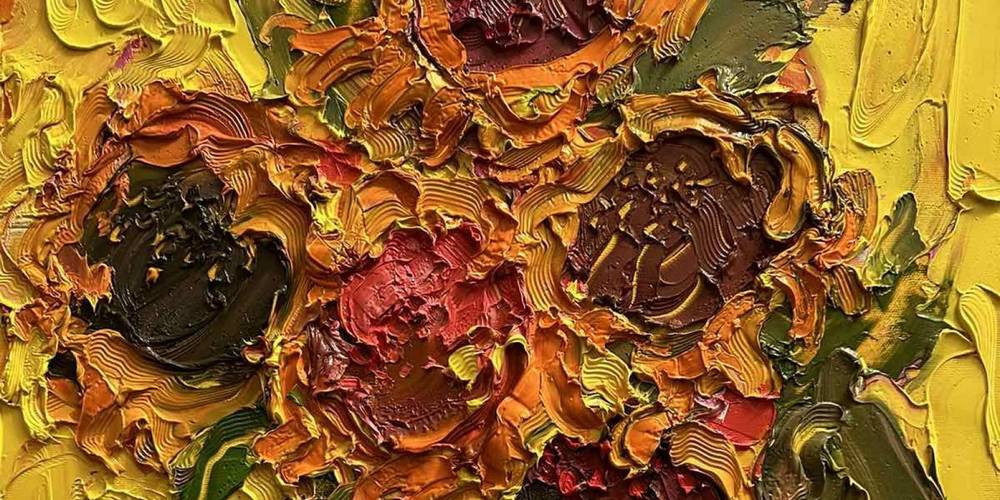Sunflowers, with their striking yellow petals and robust stature, hold a special place in Ukrainian culture and art. Their beauty is not just limited to the fields where they grow abundantly but extends into the canvases of many Ukrainian artists who have captured their essence in various creative expressions. This fascination with sunflowers is rooted deeply in Ukraine’s cultural heritage, symbolizing warmth, prosperity, and resilience. Through art, sunflowers are transformed from mere botanical wonders into powerful symbols of national identity and personal expression.
Symbol of sunlight and resilience
The sunflower, or “soniashnyk” in Ukrainian, is more than just a plant; it’s a cultural icon. Known for its large, vibrant blooms that track the sun’s path across the sky, the sunflower embodies the themes of loyalty and adoration, a metaphor for how the people of Ukraine have historically oriented themselves toward freedom and growth, even amidst challenges. This heliotropic behavior, where the flower turns to face the sun, symbolizes resilience and unwavering optimism—a reflection of the Ukrainian spirit.
Artistic features
Ukrainian artists often depict sunflowers with an emphasis on their natural beauty and symbolic meaning. The paintings frequently highlight the flower’s bold geometry and radiant colors, which stand out against the often muted tones of rural landscapes. Artists utilize thick, expressive brushstrokes to convey the texture of the sunflower’s petals and seeds, creating a sense of movement and life within the stillness of the canvas. The sunflower’s sturdy stem and broad leaves are also subjects of interest, symbolizing strength and grounding.
The use of perspective in sunflower paintings is particularly notable. Artists often choose to portray these flowers from a low vantage point, emphasizing their towering presence and creating a sense of awe. This technique not only highlights the sunflower’s physical attributes but also its symbolic role as a guardian of the land—a silent witness to Ukraine’s history and struggles.
Color palette
The predominant colors in sunflower paintings are vibrant yellows, rich greens, and deep browns. The yellow petals are often depicted in various shades, ranging from bright, sunlit hues to deeper, golden tones that evoke the warmth of the setting sun. This color is symbolic of happiness, vitality, and energy—qualities that are synonymous with the sunflower and reflective of Ukraine’s cultural ethos.
The green leaves and stems are portrayed with an array of tones, from fresh spring greens to darker, earthy shades, symbolizing growth, fertility, and stability. The center of the sunflower, often depicted in rich browns and blacks, provides a stark contrast, representing the earthiness and grounded nature of Ukrainian life. This interplay of colors creates a dynamic composition that captures the viewer’s attention, much like the sunflowers captivate those who encounter them in nature.
Symbolism
In Ukrainian art, sunflowers are laden with symbolism. They are often associated with themes of perseverance and hope, mirroring the sunflower’s own journey from seed to towering bloom. The flower is also a national symbol of Ukraine’s agricultural heritage, representing the country’s long-standing relationship with the land and its bounty.
Sunflowers are also symbolic of peace and unity. During turbulent times, the flower has become an emblem of solidarity, used in protests and movements to symbolize the hope for a peaceful future. Its bright, open face serves as a reminder of the light and positivity that can prevail even in the darkest times.
A Blooming Legacy
Through these artistic expressions, sunflowers in Ukrainian art become more than just botanical subjects; they transform into vibrant symbols of national identity, personal resilience, and the enduring spirit of a people. Ukrainian artists, with their unique styles and perspectives, continue to keep the legacy of the sunflower alive, capturing its beauty and symbolism for future generations to appreciate.
